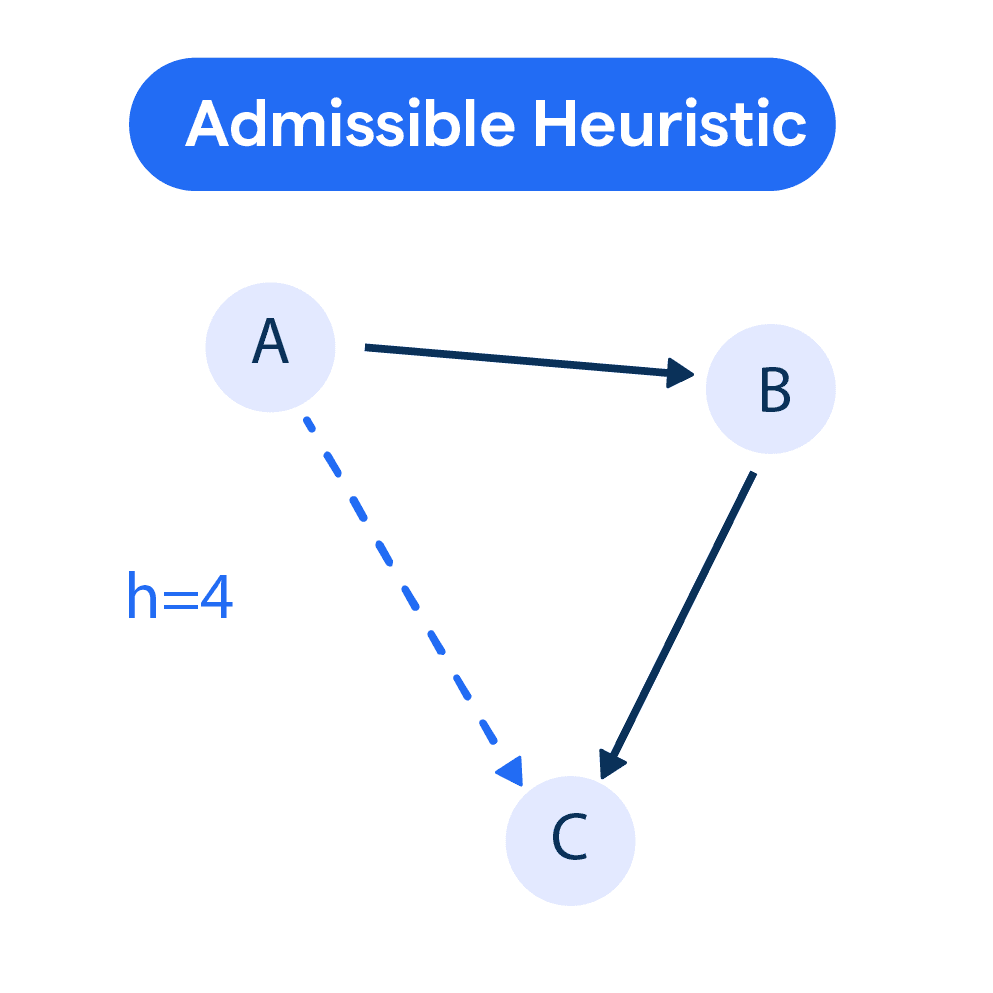What is an Admissible Heuristic?
An admissible heuristic is, simply put, an educated guess employed to streamline problem-solving in computer science, especially in pathfinding and AI.
An admissible heuristic must never overestimate the cost of reaching the goal from a particular point.
Why is it called 'Admissible'?
The term 'admissible' stems from the fact that the heuristic must always comply with the rule of never overestimating. Any heuristic that ensures this can 'admit' a solution consistently, making it an 'admissible heuristic.'
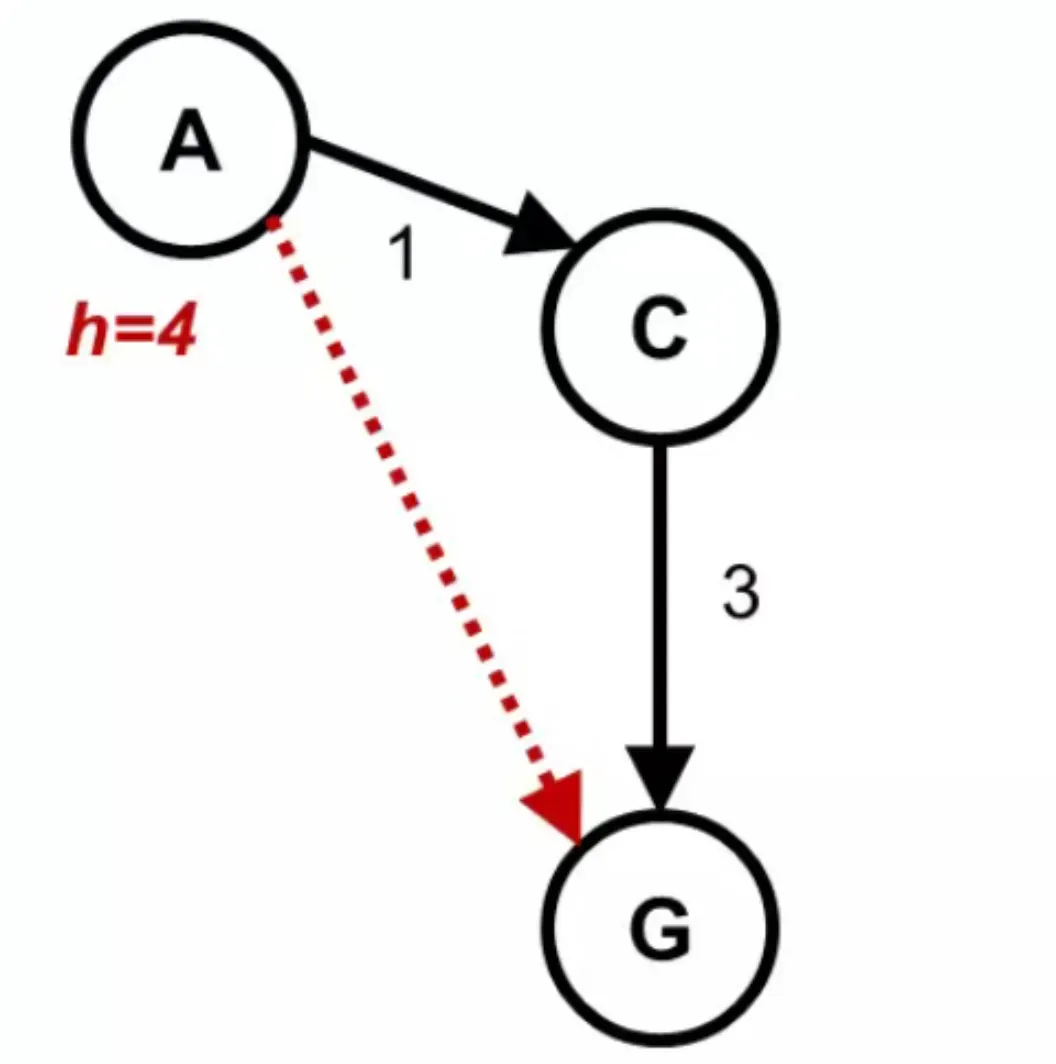
Importance of Admissible Heuristic
Admissible heuristics simplify complex problems by providing a feasible path to the solution while reducing execution time and computational resources. They are pivotal in fields like AI, computer games, logistics, navigation systems, etc.
Risks of Inadmissible Heuristics
Inadmissible heuristics that overestimate the cost can lead to sub-optimal solutions or even miss the solution completely. Hence, choosing an accurate admissible heuristic is crucial.
How Admissible Heuristic Works?
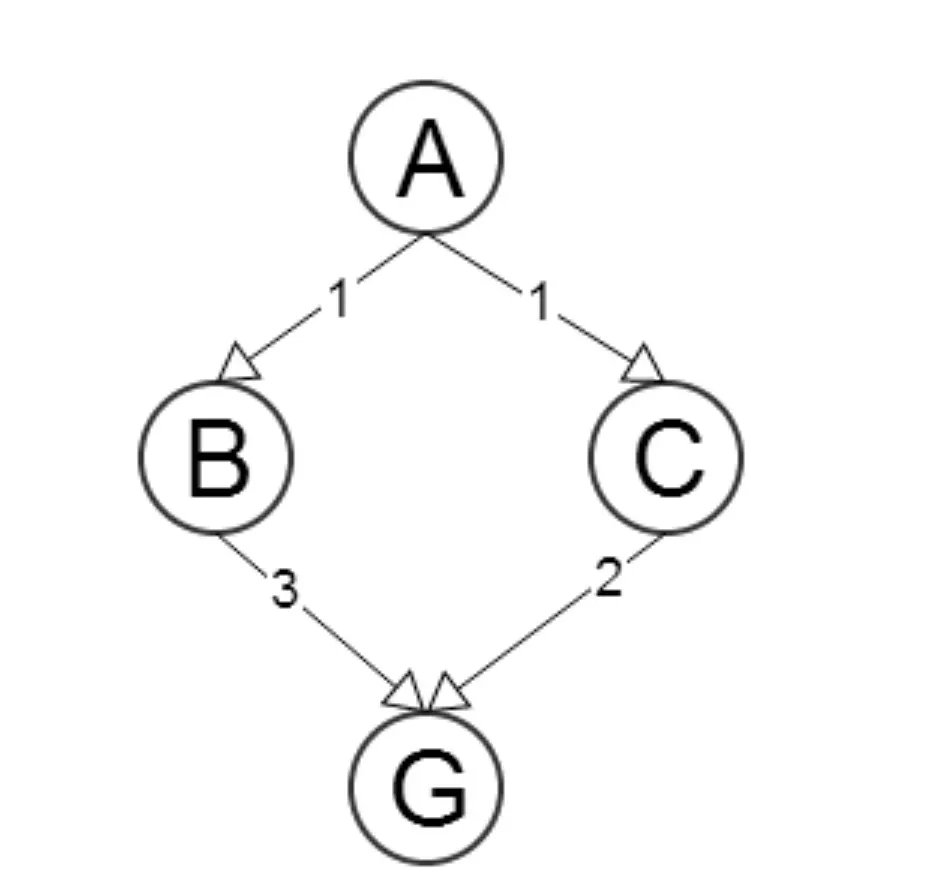
Basic Principle of Admissible Heuristic
At its core, an admissible heuristic operates by underestimating the cost to attain a goal. This enables it to explore possible solutions without getting stuck in needless loops or dead-ends.
Types of Admissible Heuristics
There are several types of admissible heuristics, depending on the problem at hand. Examples include straight-line distance in navigation problems, Manhattan distance for grid-based pathfinding, etc.
Choice of Admissible Heuristic
The choice of an admissible heuristic should balance problem-specific accuracy and computational efficiency. The chosen heuristic should offer a good approximation without excessive calculation overhead.
Assumptions and Limits
Despite their usefulness, admissible heuristics involve a certain level of assumption, as they estimate rather than calculate. They work best when used in conjunction with sound problem-solving algorithms and accurate data.
Role in Algorithms
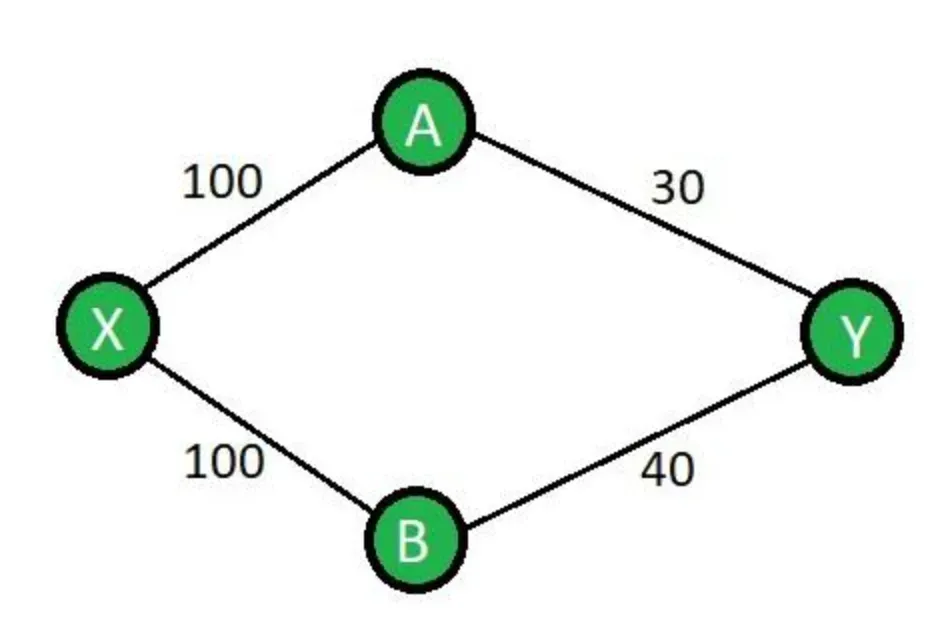
A* Search Algorithm
One of the most known applications of admissible heuristics is the A* search algorithm, which is widely used in pathfinding and graph traversal, where the costs are known.
Heuristic Functions in Algorithms
Heuristic functions serve as the driving force behind many algorithms. They provide an estimate of the minimal cost required to reach the goal from a given point, enabling the algorithms to prioritize which paths to explore.
Greedy Algorithms and Admissible Heuristics
Greedy algorithms, which make the locally optimal choice at each stage, often use admissible heuristics to guide their choices. This improves their chances of finding a global optimum.
Complexity Reduction
Admissible heuristics can significantly reduce algorithm complexity by limiting the number of nodes or options an algorithm need to explore—thus, improving the scalability and efficiency of algorithms.
Relation with Consistency (or Monotonicity)
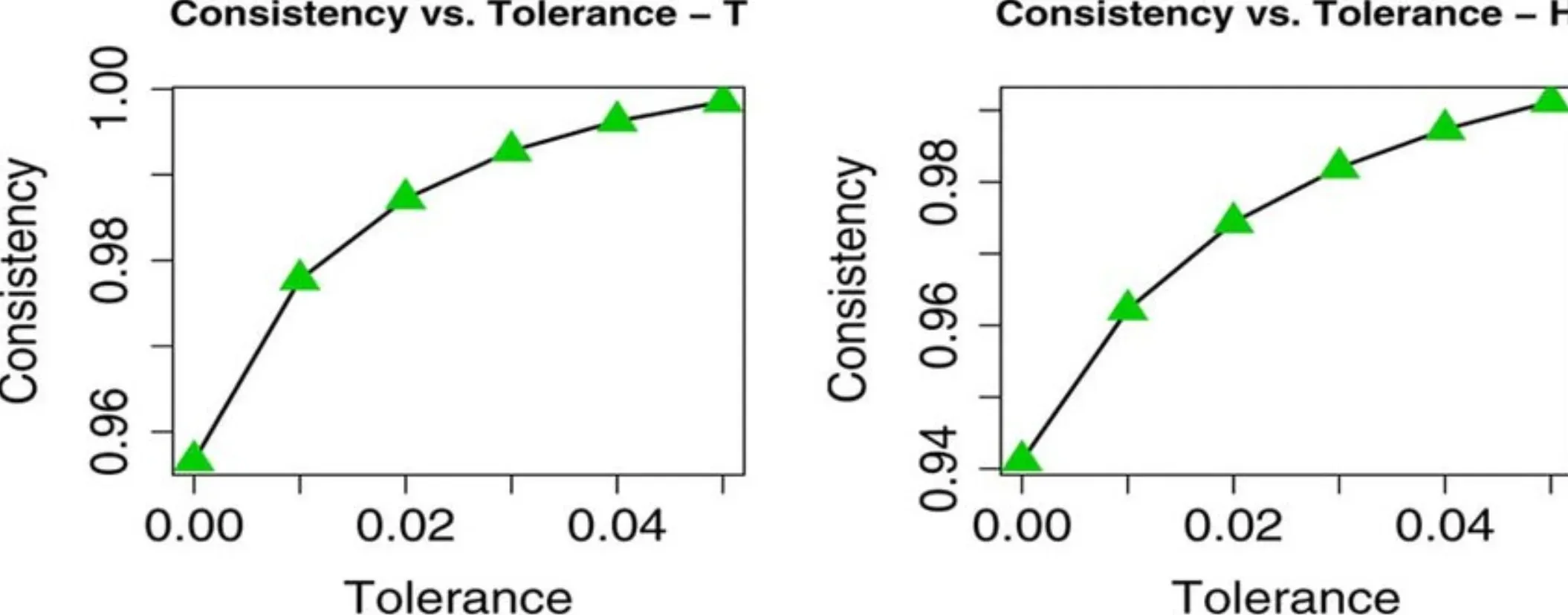
What is Monotonicity?
In the context of heuristics, monotonicity, also known as consistency, is a property where the estimated cost from current node to a goal node is less than or equal to the cost from the current node to a successor node plus the cost from the successor node to the goal.
Admissibility vs consistent heuristic
Every consistent heuristic is admissible, but not every admissible heuristic is consistent. For an admissible heuristic to be consistent, it has to satisfy the monotonicity condition.
Importance of Monotonicity
A heuristic being consistent guarantees the optimality of the solution found by A* Search Algorithm. It keeps the cost from overshooting and also reduces the number of nodes examined.
Breaking Consistency
Even a small violation of consistency can lead to inefficiencies and potentially incorrect outputs from the heuristic-guided algorithms. So, while designing heuristics, ensuring consistency is of paramount importance.
Use Cases of Admissible Heuristics
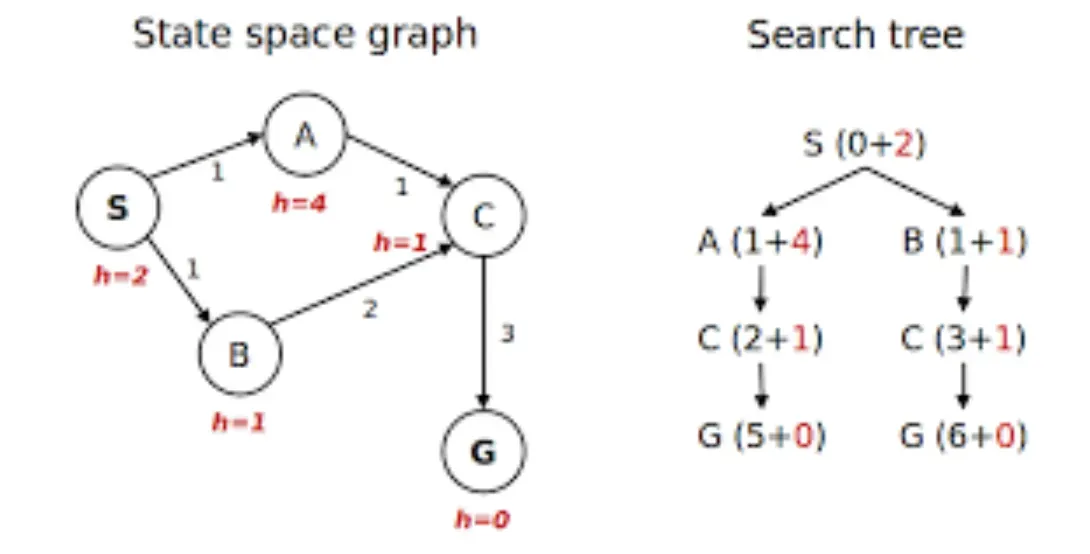
In Artificial Intelligence
AI systems extensively use admissible heuristics to make decision-making processes more efficient. They help find optimal solutions in various domains, including robotics, machine learning, and more.
In Video Games
In video game design, admissible heuristics are vital for creating efficient pathfinding systems - enabling characters to navigate complex environments swiftly and logically.
In Network Routing
In networks, admissible heuristics are used in the routing of data packets. They help find the shortest and most effective path for data transmission, reducing latency and improving performance.
In Logistics and Planning
For logistics companies, admissible heuristics help in route planning, task scheduling, and more. They enable the creation of models that can handle vast amounts of data while finding efficient solutions.
Optimizing Admissible Heuristics
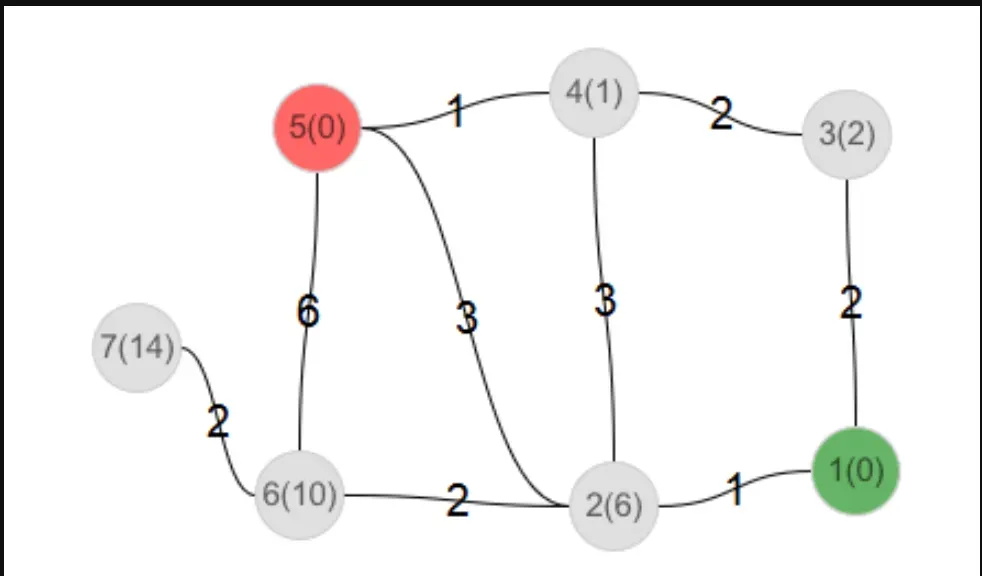
Selecting the Optimal Heuristic
The key to optimizing an admissible heuristic is finding one that is closest to the actual cost without overestimating it. This requires a nuanced understanding of the problem dynamics.
Balancing Efficiency and Accuracy
An overly simplistic heuristic might be computationally efficient but may not offer a close enough estimate. Balancing these trade-offs is critical for an effective and efficient heuristic.
Evolving Heuristics
In some cases, heuristics can be iteratively refined using feedback from problem-solving experiences. This approach may lead to the development of more effective heuristics over time.
Designing Heuristics with Machine Learning
Machine learning techniques can also be employed for designing heuristics, especially in complex or dynamic problem scenarios. Such data-driven approaches can enhance heuristic performance significantly.
Limitations of Admissible Heuristic
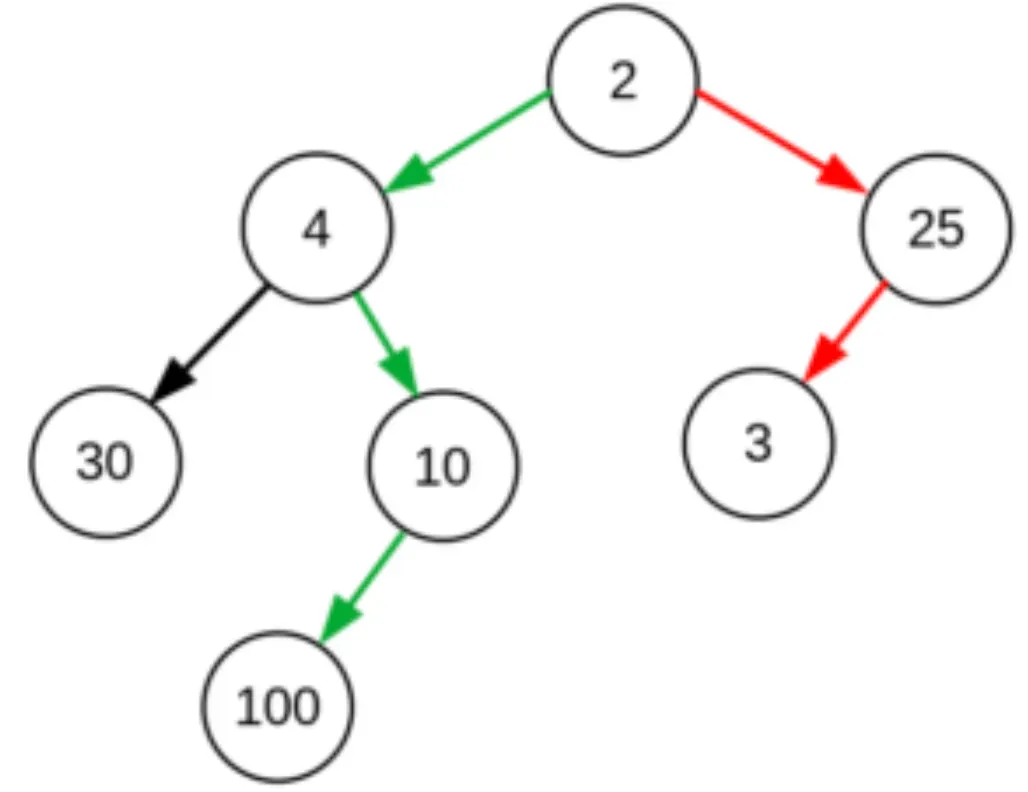
Dependence on Problem Knowledge
Admissible heuristics are typically problem dependent and require specific knowledge about the problem to be effective. Their applicability across different problem domains is limited.
Trial-and-error Nature
Despite being scientifically-formulated, often, finding the right admissible heuristic involves trials and might even involve some errors.
Admissibility Does Not Ensure Efficiency
Being admissible does not guarantee that the heuristic will be computationally efficient. Some admissible heuristics may still result in excessive computation or memory usage.
Risk of Over-simplification
There is a risk of over-simplifying complex problems while designing a heuristic. This could lead to underutilization of available information, resulting in sub-optimal solutions.
Frequently Asked Questions (FAQs)
What is an admissible heuristic?
An admissible heuristic is an estimate used in problem-solving that never overestimates the cost to reach the goal.
Why is an admissible heuristic important in AI?
In AI, admissible heuristics help streamline complex decision-making processes. They enhance computational efficiency and aid in finding optimal solutions quicker.
What makes a heuristic admissible?
A heuristic is admissible if it never overestimates the cost of reaching the goal from a given point in the problem space.
How does an admissible heuristic lead to an optimal solution?
Admissible heuristics guide algorithms to explore feasible paths without getting stuck in unnecessary loops. By accurately underestimating costs, they help find optimal solutions.
Can inadmissibility in a heuristic cause problems?
Yes, inadmissible heuristics that overestimate costs can lead to sub-optimal solutions or even miss the solution completely. It's crucial to choose and design heuristics carefully.
